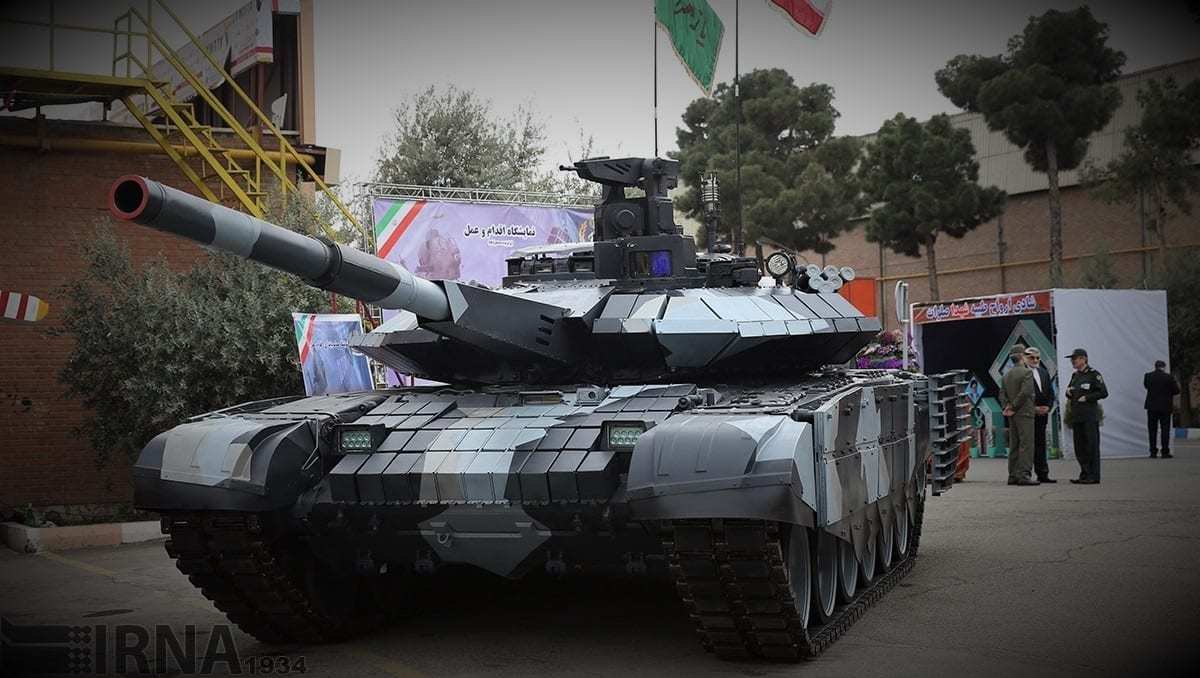In 2021, Iranian state media reported that its third-generation “Karrar” battle tank had entered service with the Islamic Revolutionary Guard Corps. Largely derived from the Soviet-era T-72 design, the new variant also incorporates elements from the British Chieftains, the U.S. Abrams, and Russia’s T-90MS battle tanks. In fact, the tank is suspected to be an inferior version of Russia’s T-90MS third-generation battle tank.
Five years earlier, Moscow agreed to allow Tehran to domestically produce the T-90S tank in addition to helping the Guard Corps enhance its aging T-72 fleet. The agreement ultimately failed, and Iran claimed to have the technological capabilities to produce its own advanced battle tank. While Tehran’s homegrown design is essentially a clone of Russia’s T-90S, Iran’s leadership claims the Karrar as a domestic success.
Homegrown Options
In 2015, Russian company Uralvagonzavod announced it would enable the licensed production of the T-90S main battle tank in Iran following the lifting of restrictions between the two countries. (UN Security Council Resolution 1020, passed in 2010, had imposed an arms embargo on Iran, limiting the country’s ability to pursue military deals with its allies.)
This announcement was critical – the addition of the T-90 to Iran’s arsenal would significantly advance its armored forces’ capabilities. Iran’s main battle tank at the time, the Zulfiqar, entered service in the late 1990s and is believed to be derived from the designs of the M48 and T-72 battle tanks. However, Iranian state media would soon report that the country’s new series of third-generation tanks would be homegrown.
The Organization of Defense Industries of the Islamic Republic of Iran first debuted the Karrar design in 2016. Within a year, Iran’s defense minister announced an assembly line for the Karrar at the Bani Hashim Defense Industrial Complex. By 2018, 800 tanks were reportedly produced. According to a later Tasnim News Agency report, Iran’s army would provide its armored forces with its advanced, domestically manufactured variant of the T-90. Iranian Army Ground Force Brig. Gen. Kiomars Heidar said that the new tank would be a product of a joint project between the defense ministry and the armed forces. He added that the Karrar is “much more advanced than the Zulfiqar,” since the new variant “has turned into a weapon for modern warfare.” Heidar pointed to the tank’s new gun stabilizer and chemical defense systems to emphasize its advanced capabilities.
A few months later, Iran’s Ministry of Defense and Armed Forces Logistics released photographs depicting the upgraded Karrar tank. According to experts, modifications to the tank’s frontal armor became apparent and the “commander’s cupola, machine gun and hatch had been removed.” Additionally, the new tank appeared to feature a new gunner’s sight and remote-controlled weapons system. Similar to Russia’s T-90, the Karrar is believed to have a crew of thee and host composite armor with Explosive-Reactive Armor panels.
While the Karrar battle tank is certainly more advanced than the Zulfiqar, it doesn’t quite fit the bill as an Iranian “homegrown” product. Similar to many components of Iran’s military arsenal, the Karrar tank is merely a replica of foreign tech.
Maya Carlin is a Middle East Defense Editor with 19FortyFive. She is also an analyst with the Center for Security Policy and a former Anna Sobol Levy Fellow at IDC Herzliya in Israel. She has by-lines in many publications, including The National Interest, Jerusalem Post, and Times of Israel.

